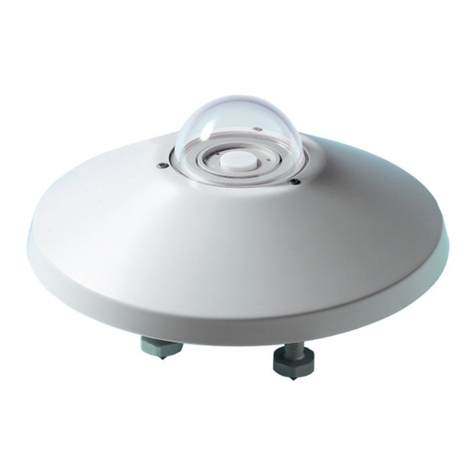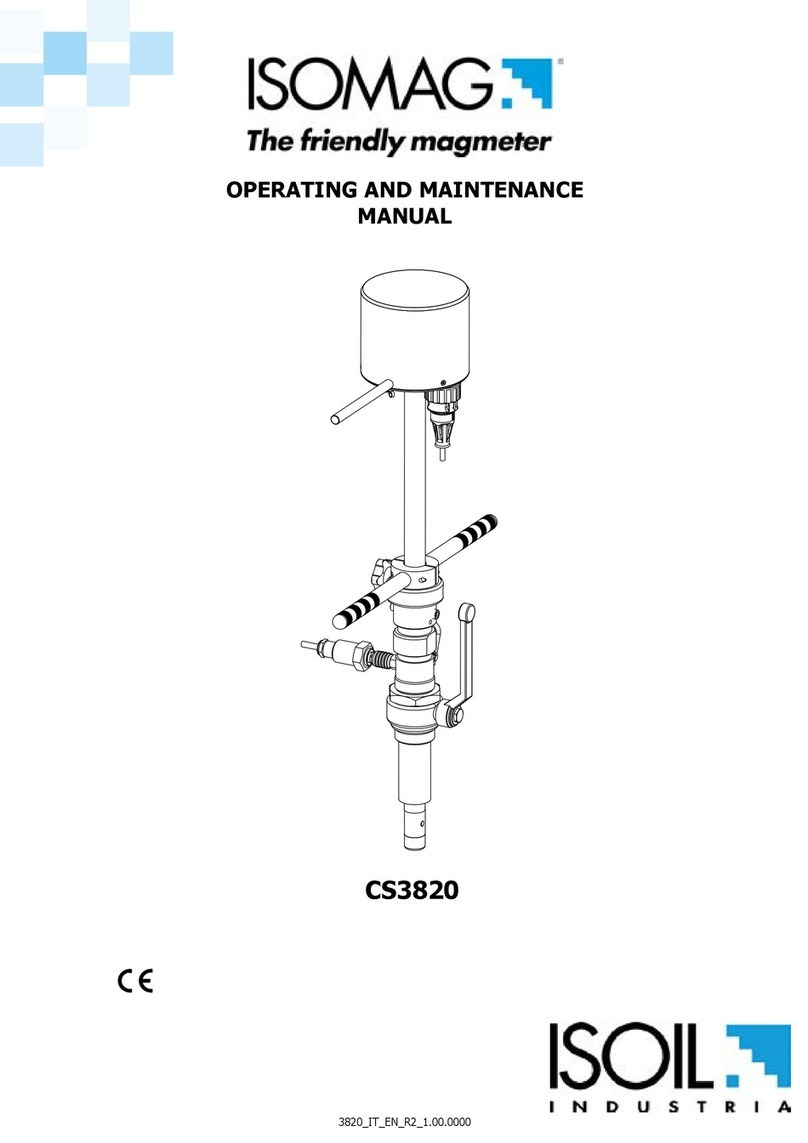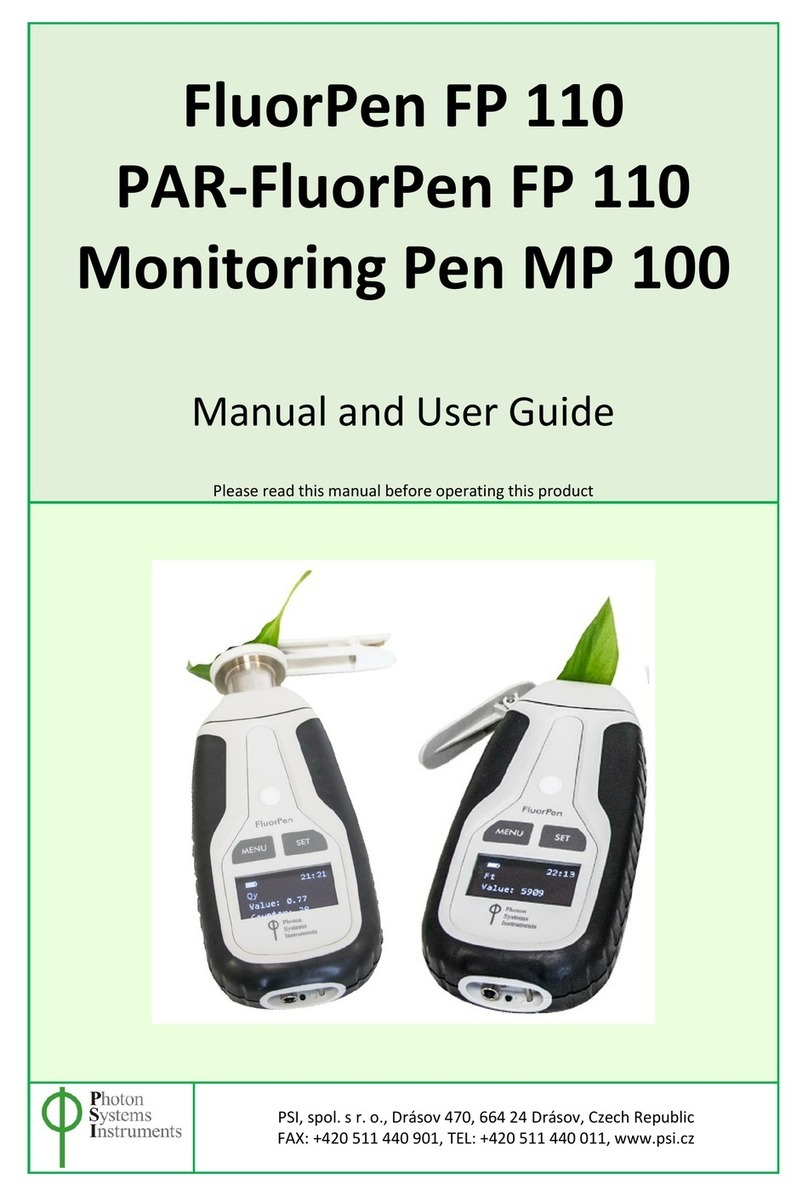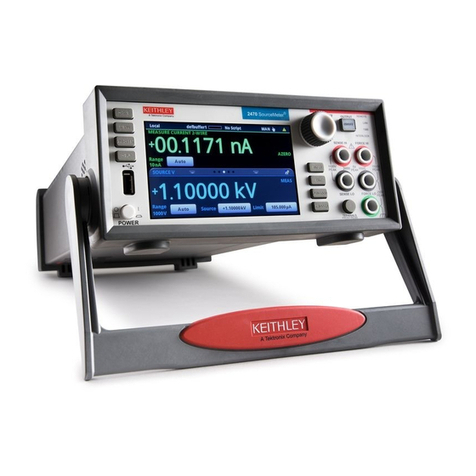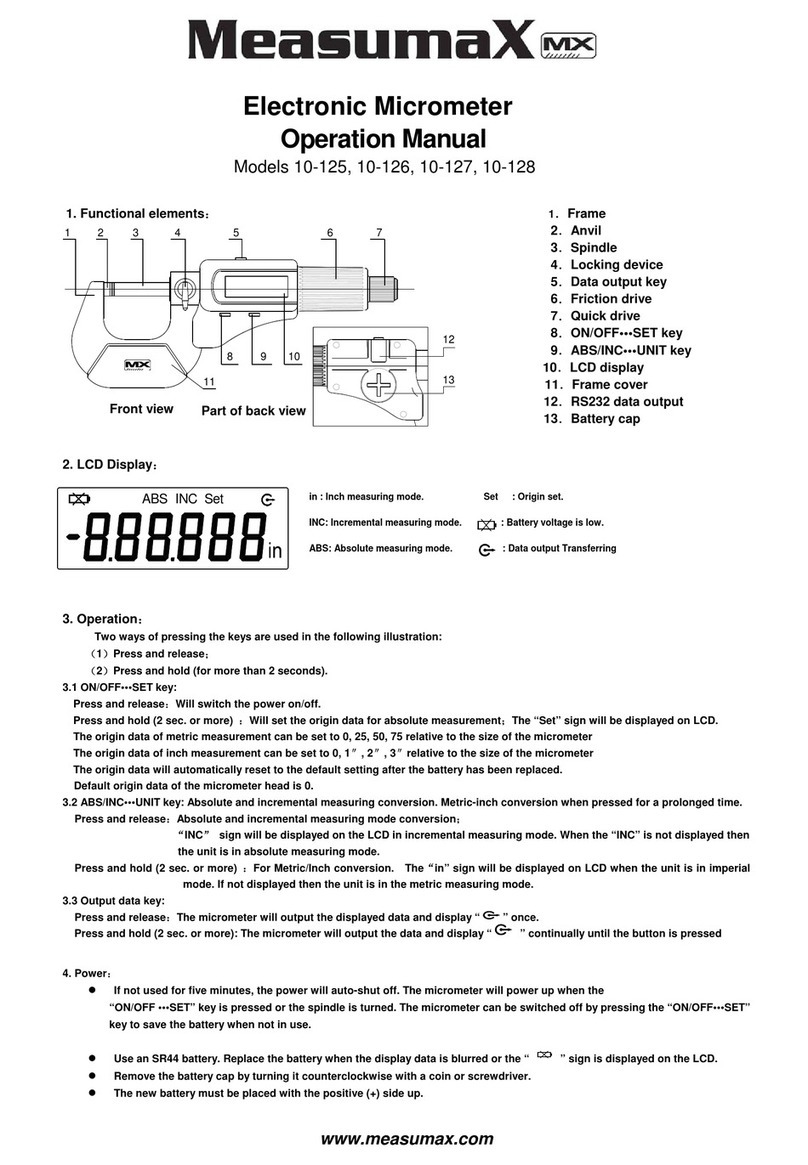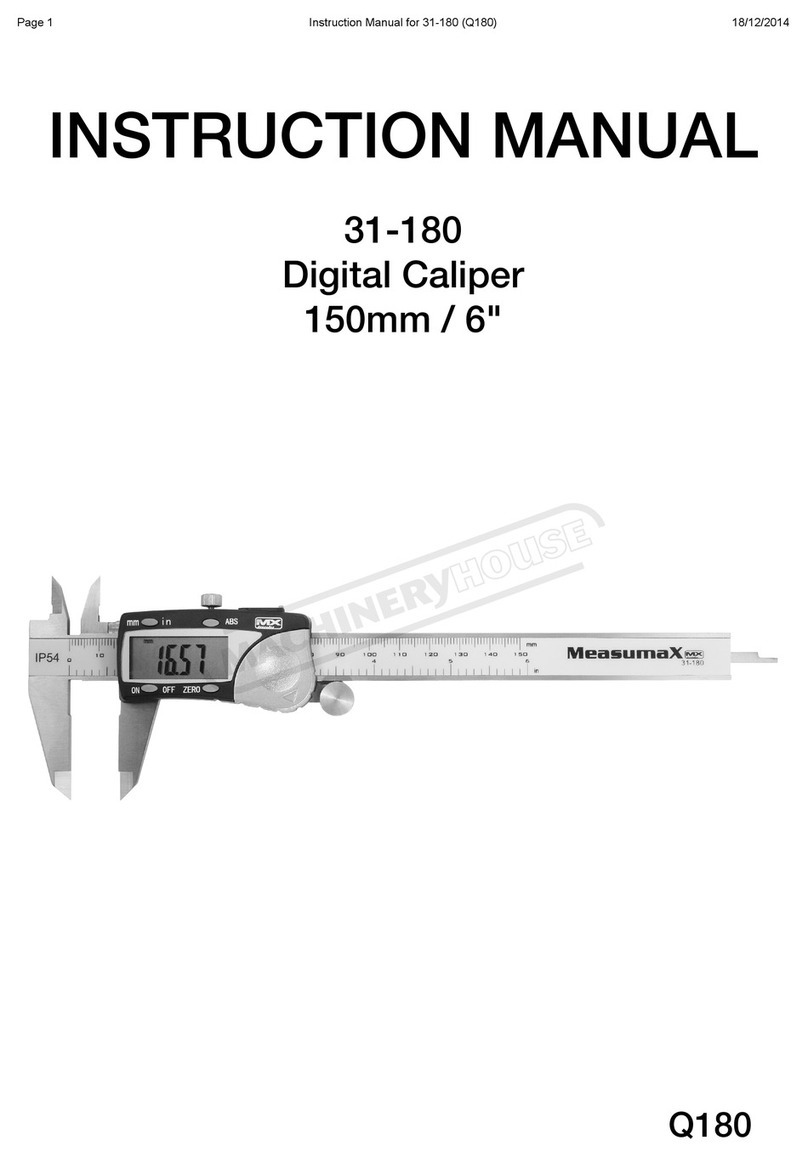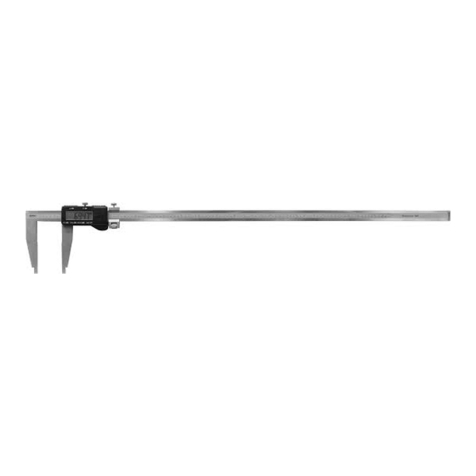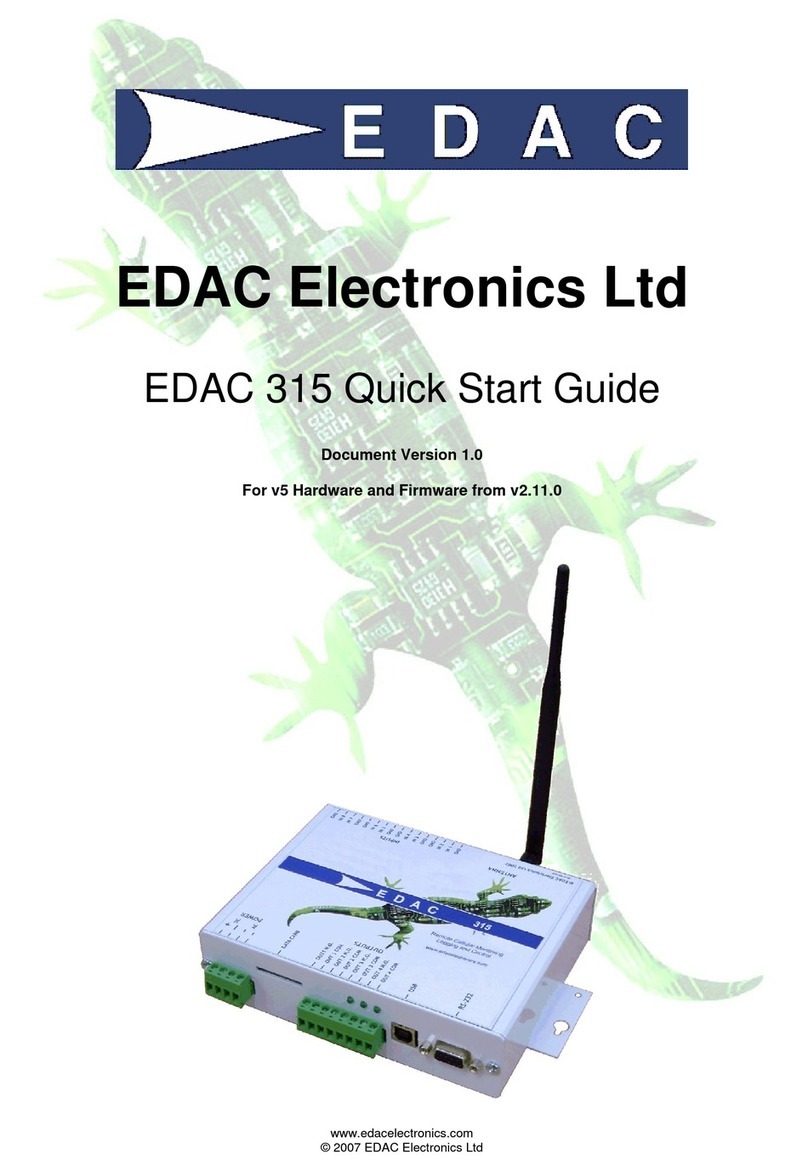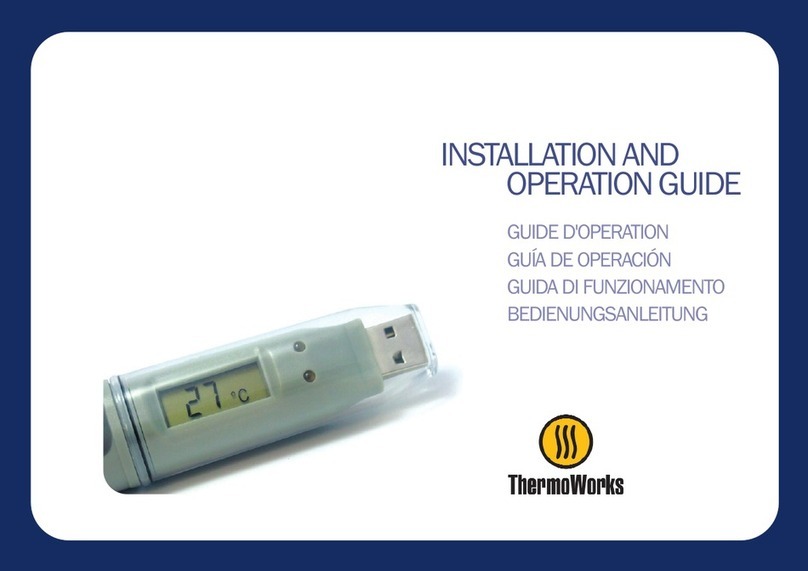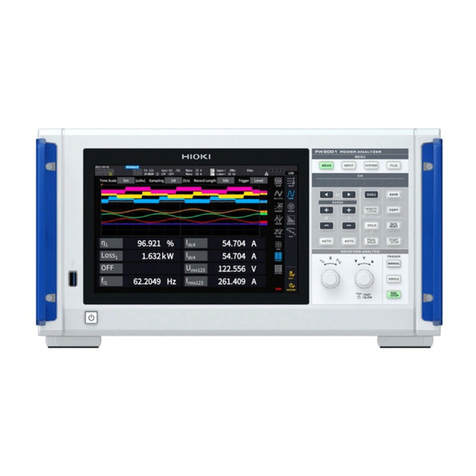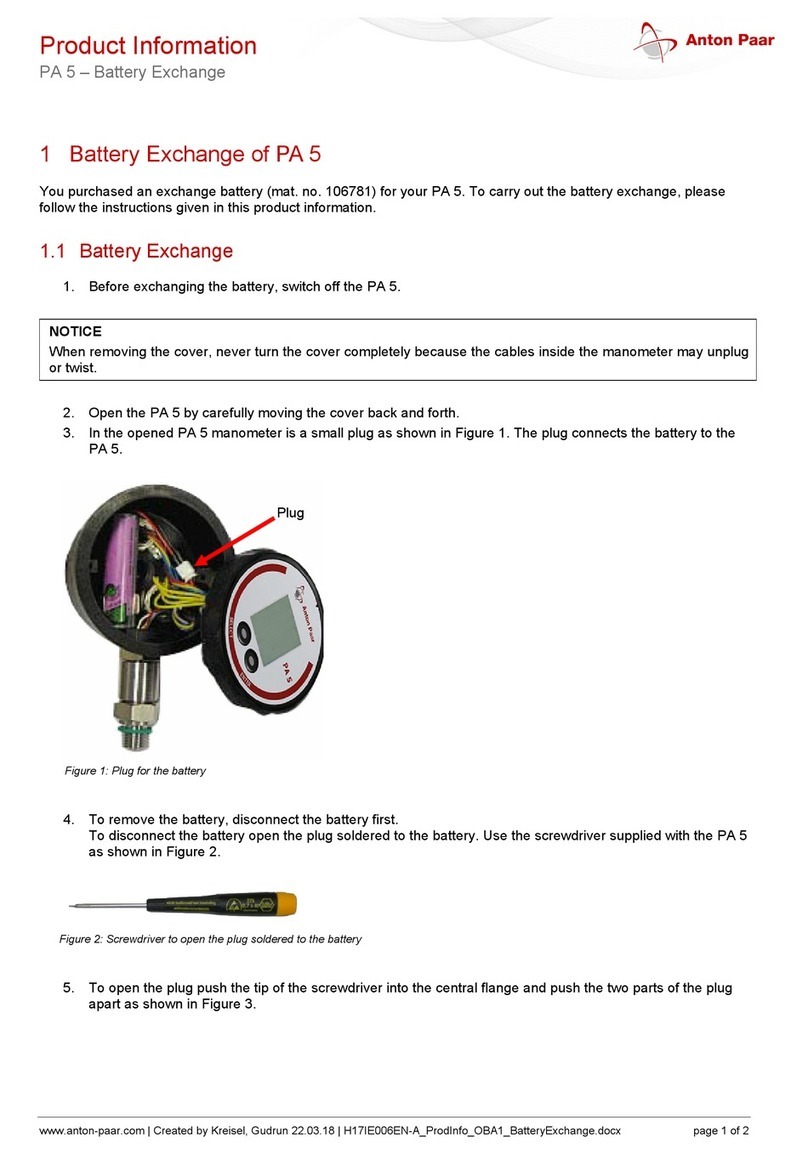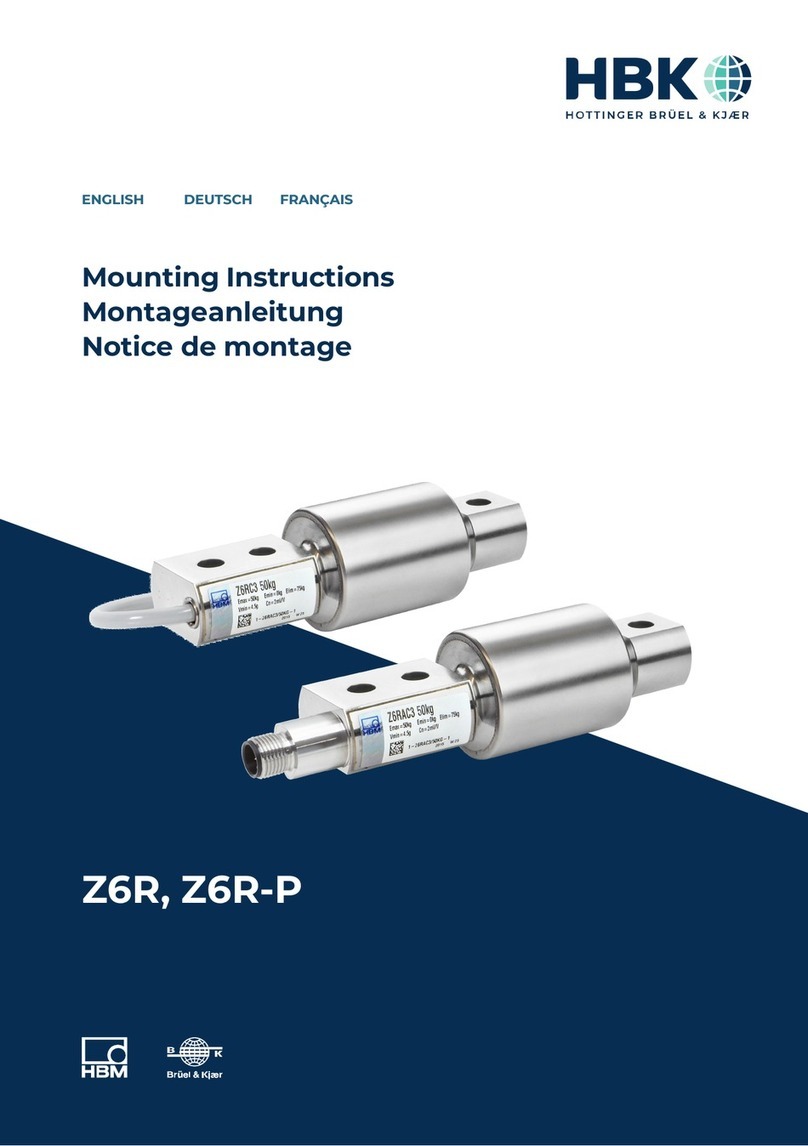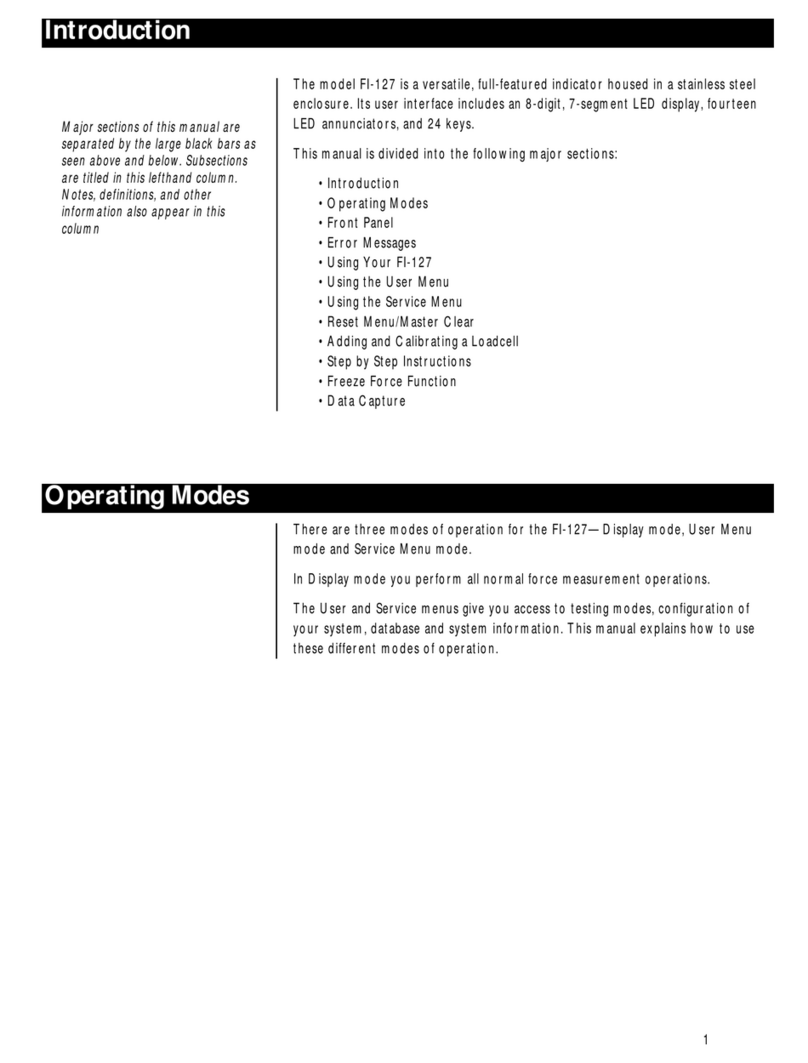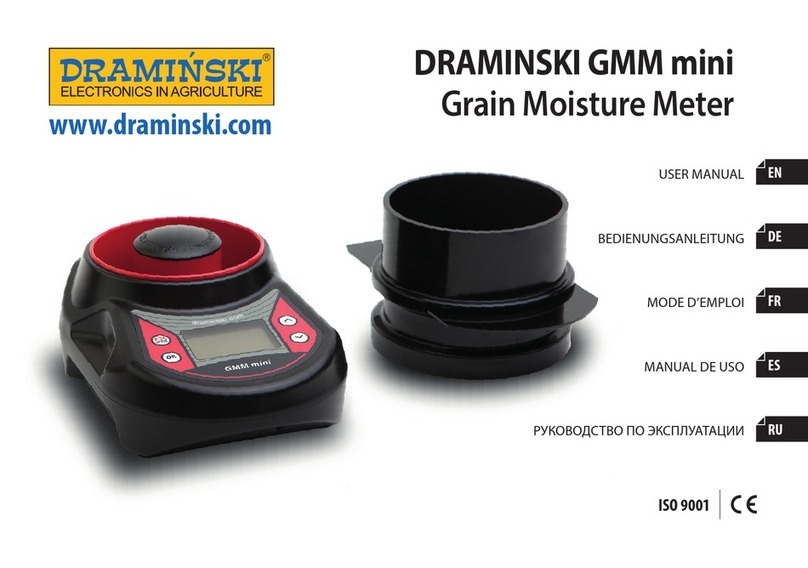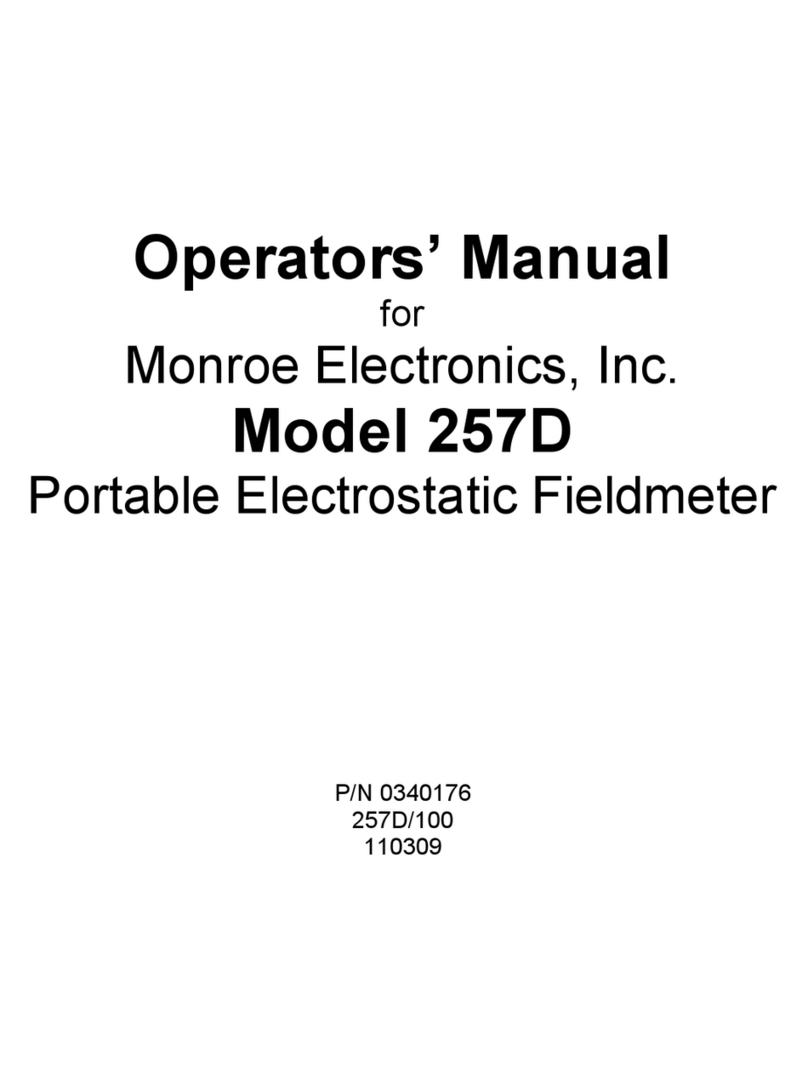Measuring The Coolant Concentration: it is best to clean
the instrument test area, both the daylight plate and the top of
the main prism assembly by using a soft damp cloth.
Then once the scale has been calibrated place 1 to 2 drops
of cutting uid onto the prism glass and close the plate cover
(Fig.4). If you are measuring the current concentration of a
sump it is recommended to ll a paper cup with the your used
cutting uid and let it sit for 10 minutes. Then poke a small
hole in the middle of the cup and use the stream of coolant to
take your sample. When you look through the refractometer
your reading is measured at the intersection of where the two
blue & white colours meet - example 3 Brix. (Fig.5)
Note! It is important to note that each coolant has its own
unique concentration readings. Coolant can have a different
refractometer reading of 9.2°Bx at 10% concentration (10:1)
while another coolant may have reading of 3.3°Bx at 10%
concentration (10:1)
Example: Coolant with a Refractometer Index of 2. Therefore
if the scale measures 3 on the Brix scale then we multiply this
gure by the index (2 x 3 Brix = 6) concentration ratio is 6:1
The advantage of checking coolant with a refractometer is
that it can also indicate when the coolant is dirty and old. This
is displayed as a fuzzy or blurred line where the top colour
meets the white bottom of the scale. Clean coolant will display
a sharp line. (Fig.6)
Automatic Temperature Compensation (ATC) System:
The Measumax 70-670 unit has an Automatic Temperature
Compensation system (ATC). Please note for best results the
ambient working temperature of the room should be 20°C
Warnings: Accurate measurements depends on properly
calibrating the refractometer and the temperature of the prism
should be the same as the test piece.
Do not immerse the instrument into liquids.
Clean the instrument after using
Fig.5
Fig.6
Fig.4
